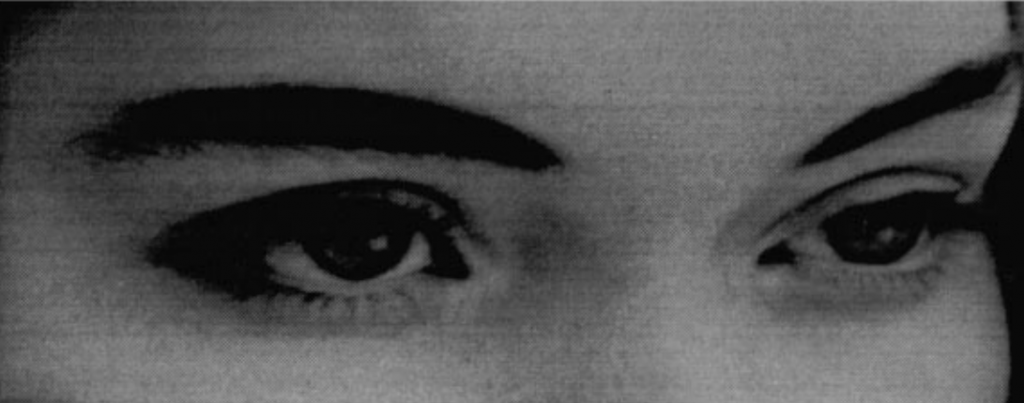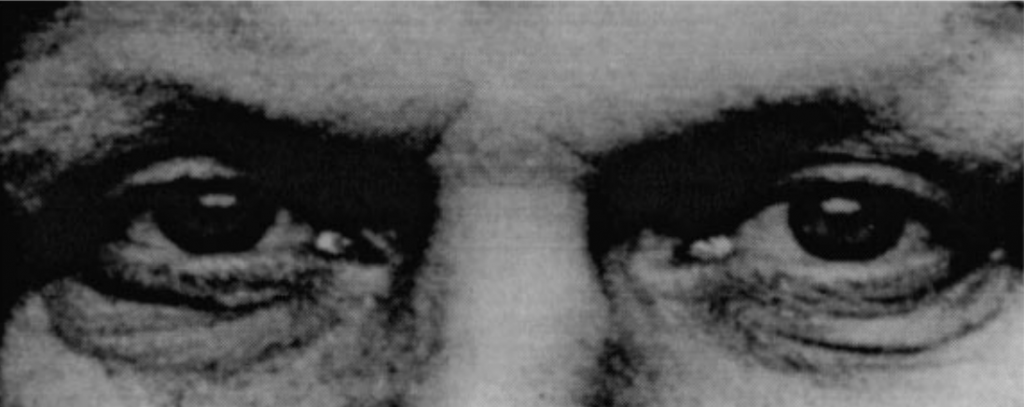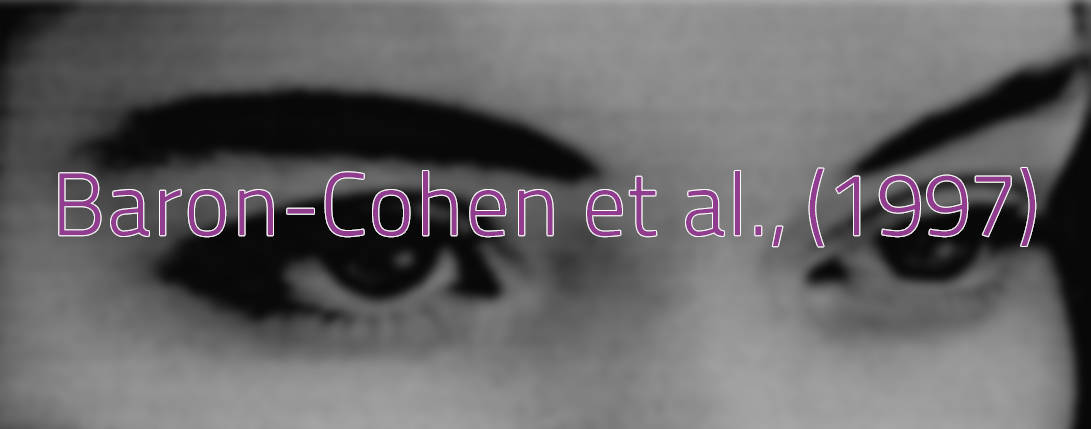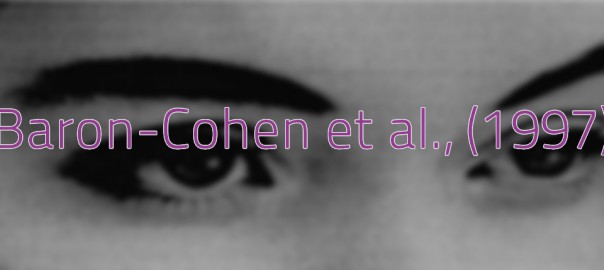Baron‐Cohen, S., Jolliffe, T., Mortimore, C., & Robertson, M. (1997). Another advanced test of theory of mind: Evidence from very high functioning adults with autism or Asperger syndrome. Journal of Child Psychology and Psychiatry, 38(7), 813-822.
This is the contemporary individual differences psychology study which you will look at for your H167 AS OCR Psychology exam. You will also need this study for your OCR H567 A Level Psychology core studies exam.
Background
The theme of the individual differences psychology studies in the H167 exam is understanding disorders. This study by Baron-Cohen et al. (1997) focuses on Autism in Adults.
If you want to further your understanding of this study, Baron-Cohen has written several books which are highly beneficial to read:
- Autism and Asperger Syndrome (The Facts)
- Zero Degrees of Empathy
- Mindblindness: An Essay on Autism and Theory of Mind: Essay on Autism and the Theory of Mind (Learning, Development and Conceptual Change)
What theory is the research based on?
In a previous study, Baron-Cohen (1990), suggested people with autism have a common deficit: theory of mind (ToM).
Theory of mind is the mental ability to understand mental states and the mental stage of other people. This deficit of theory of mind is referred to as mind blindness.
Let’s look at an example.
Imagine a person, a cake and a plate of broccoli. The person is looking at the cake. What does the person what?
Most of you will know that the person wants the cake?
That is because most of you have theory of mind. Notice in the example the person’s wants were not described, you all inferred them thanks to your ability to understand other people’s mental states. People with autism and Asperger’s cannot understand other people’s mental states.
Autism is described as a spectrum disorder because there is a large variance degrees to which individuals are affected.
Autism is the strongest point of the disorder. Individuals afflicted with autism have large deficits, especially with regards to social interactions and theory of mind.
Watch these videos on autism to gain a deeper understanding:
Asperger’s is similar to autism, but the symptoms are not as severe.
Aim of the Study
Baron-Cohen (1997) aimed to find out if individuals on the autistic spectrum had deficits with theory of mind.
A second aim of the study was to find out if there were gender differences in theory of mind.
Method and Design
Quasi-experiment.
The independent variable was naturally occurring and could not be manipulated by the experimenters.
Independent variable: type of person:
- Adults with Autism/Aspergers
- Adults with Tourettes
- ‘Normal’ adults.
Dependent Variable: performance on the eyes task (out of 25).
Materials and Tasks
Materials from the eyes task and gender recognition task. All the images from these tasks were standardised: they were black and white, all the same size, they were all crops slightly above the eyebrows and at the bridge of the nose.


In the eyes task, the photographs were coupled with two words which described a mental state. One of the words was the correct mental state displayed in the photograph and the other one was a foil. For example ‘happy’ and ‘sad’. The photographs were all appraised by a panel of independent judges to gain an accurate and reliable word for each photograph.
All of the foils and target mental states used in the eyes task.
- 1 Concerned – Unconcerned
- 2 Noticing you – Ignoring you
- 3 Attraction – Repulsion
- 4 Relaxed – Worried
- 5 Serious message – Playful message
- 6 Interested – Disinterested
- 7 Friendly – Hostile
- 8 Sad reflection – Happy reflection
- 9 Sad thought – Happy thought
- 10 Certain – Uncertain
- 11 Far away focus – Near focus
- 12 Reflective – Unreflective
- 13 Reflective – Unreflective
- 14 Cautious about something – Relaxed about something over there over there
- 15 Noticing someone else – Noticing you
- 16 Calm – Anxious
- 17 Dominant – Submissive
- 18 Fantasizing – Noticing
- 19 Observing – Daydreaming
- 20 Desire for you – Desire for someone else
- 21 Ignoring you – Noticing you
- 22 Nervous about you – Interested in you
- 23 Flirtatious – Disinterested
- 24 Sympathetic – Unsympathetic
- 25 Decisive – Indecisive
The Gender Recognition Task
In the gender recognition task, photographs standardised exactly like those in the eyes task were used, but instead of being made to make a forced choice of mental states, participants were asked to identify the gender of the person in the photograph. This was a control task and controlled for face perception, perceptual discrimination and social perception.
The Basic Emotion Recognition Task
In the basic emotion recognition task participants were shown full faces. There were six full faces used in this task. Participants were required to identify the correct emotion (all of which were considered basic). This was another control task used by Baron-Cohen et al. (1997). This task was used to ensure that any findings from the eyes task were not due to failures in ability to recognise basic emotions.
The emotions used in the basic emotion recognition task:
- Happy
- Sad
- Angry
- Afraid
- Disgusted
- Surprised
Happé’s Strange Stories Task
Happé’s Strange stories involved the participants being presented with a short story and then being asked questions about the story. This task was used by Baron-Cohen et al. (1997) to validate the findings from the eyes task.
Example:
Sarah and Tom are going on a picnic. It is Tom’s idea, he says it is going to be a lovely sunny day for a picnic. But just as they are unpacking the food, it starts to rain, and soon they are both soaked to the skin. Sarah is cross. She says, ‘Oh yes, a lovely day for a picnic alright!’
Is it true, what Sarah says?
Why does she say this?
Sample and Sampling Method
Three groups of participants were tested: –
- Group 1: 16 individuals with high-functioning autism or Asperger Syndrome (HFA = 4, AS = 12). The sex ratio was 13:3(male:female ). All were of normal intelligence and were recruited through an advert in the National Autistic magazine and a variety of clinical sources. (Volunteer Sampling)
- Group 2: 50 normal age-matched adults (25 male, 25 female), drawn from the general population of Cambridge. (Random Sampling)
- Group 3: 10 adults with Tourette Syndrome also age-matched with groups 1 and 2. The sex ratio was 8:2 (male:female ). All were of normal intelligence and were recruited from a tertiary referral centre in London. (Snowball Sampling)
Procedure
All the participants were tested in a quiet environment, which was either their own home, or in a laboratory setting.
Baron-Cohen et al. (1997) presented The eyes task, the strange stories, the basic emotion recognition task and the gender recognition task in a randomised order. Participants would therefore not be exposed to same order of tasks (This is a control measure).
Results
Mean Score on the Eyes Task (Out of 25)
- Autism/AS Group – 16.3 (Range: 13 – 23)
- ‘Normal’ Adults – 20.3 (Range: 16 – 25)
- Tourettes Group – 20.4 (Range: 16 – 25)
Normal males and Females mean scores on the eyes task
- Males – 18.8 (Range: 16 – 22)
- Females – 21.8 (Range: 20 – 25)
Mean Score on the Gender Recognition Task
- Autism/AS Group – 24.1 (Range: 23 – 25)
- ‘Normal’ Adults – 23.3 (Range: 22 – 25)
- Tourettes Group – 23.7 (Range: 23 – 25)
The mean score on the eyes task did not differ significantly between the Tourettes group and the ‘Normal’ adult group, but the scores of both of those groups did differ significantly from the Autism/AS group. Within the Autism/AS, there was no relationship between IQ and performance on the eyes task.
On both the gender recognition task and the basic emotion recognition tasks, there were no significant differences between the groups.
The Autism/AS made significantly more errors on the strange stories task compared with the other groups.
Conclusions
Contrary to previous research with adults, these results seem to provide evidence that adults with autism/AS do possess an impaired theory of mind.
As some of the autism/AS group hold university degrees and were all of normal intelligence, it is reasonable to suggest that Theory of Mind deficits are independent of general intelligence
Baron-Cohen et al. (1997) Evaluation
+ Ethics – Participants were protected from harm throughout the study. Some participants were tested in their own homes which will have prevented them feeling undue stress from being in a novel setting. This is particularly pertinent because some of the participants used in this study were on the autistic spectrum and thus may have been very uncomfortable in settings with which they are unfamiliar. This also increases the replicability of the study.
+ Validity – This study is very well controlled. There were standardised stimuli used throughout the tasks in the study. There were different groups used which were age matched. There were tasks which controlled for potential issues with the eyes task.
+ Reliability – This study is highly reliable because, as mentioned previously, there are a high number of controls.
+ Inter-rater Reliability – The images and emotions used in Baron-Cohen et al. (1997) were appraised by a group of independent judges.
– Generalisability – there were a small number of participants gathered from a specific geographic location, meaning it is difficult to accurately generalise the results from this study to the wider world.
+ Usefulness – This study provides useful information about autism and Asperger’s, which increases understanding about these disorders and may be used to develop interventions or treatments in the future.
Baron‐Cohen, S., Jolliffe, T., Mortimore, C., & Robertson, M. (1997). Another advanced test of theory of mind: Evidence from very high functioning adults with autism or Asperger syndrome. Journal of Child Psychology and Psychiatry, 38(7), 813-822.
Further Reading
Autism and Asperger Syndrome (The Facts)
Psych Yogi’s Top Ten Psychology Revision Tips for the A* Student

